In January I visited Singapore, see my blog post Singapore 2018 . We met my friend Dr Lee and had a wonderful time. It was only a short visit and there was no time to visit his penthouse in the iconic Pearl Bank apartments, the tallest and densest residential building in Singapore when it was completed in 1976.
In February the building has been sold to a developer and it will likely not be conserved despite the wishes of heritage lovers 🙁
The building was designed by architect Tan Cheng Siong, here is an interesting interview with him about the Pearl Bank apartments. 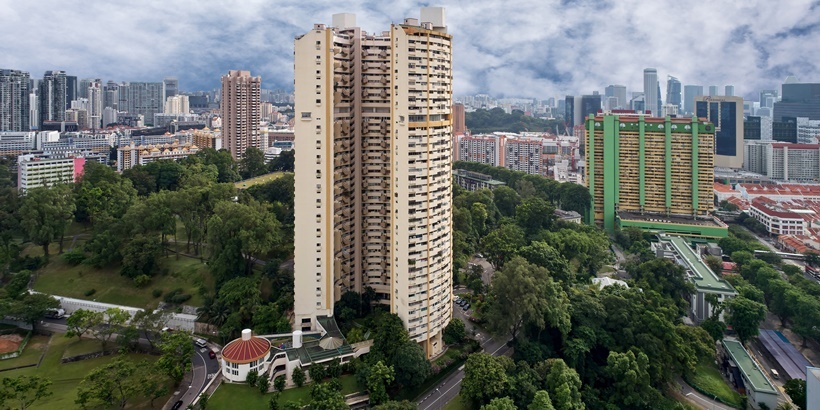
Dr Lee invited me to stay a couple of nights in his penthouse. The C-shape of the design is very impressive, both looking up from the central courtyard, as looking down from the 37th floor where he has been living since the completion of the building!
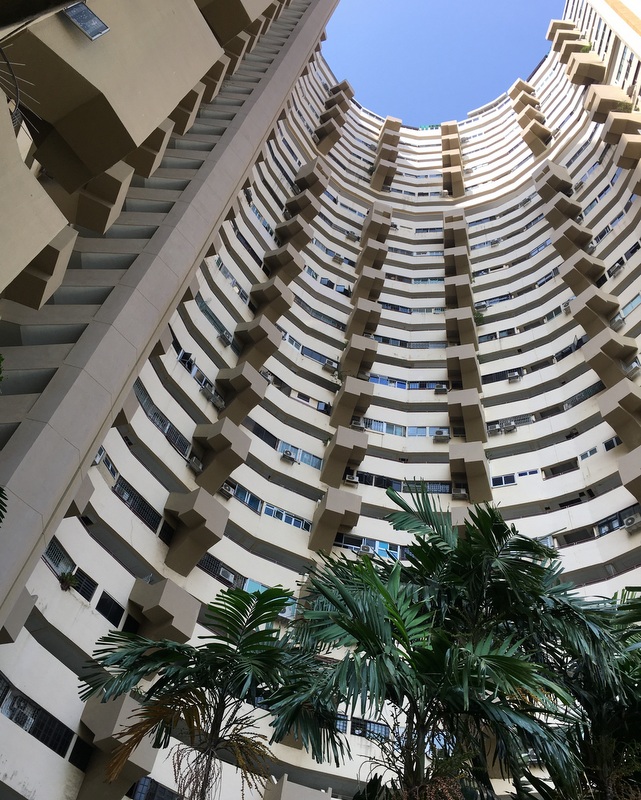
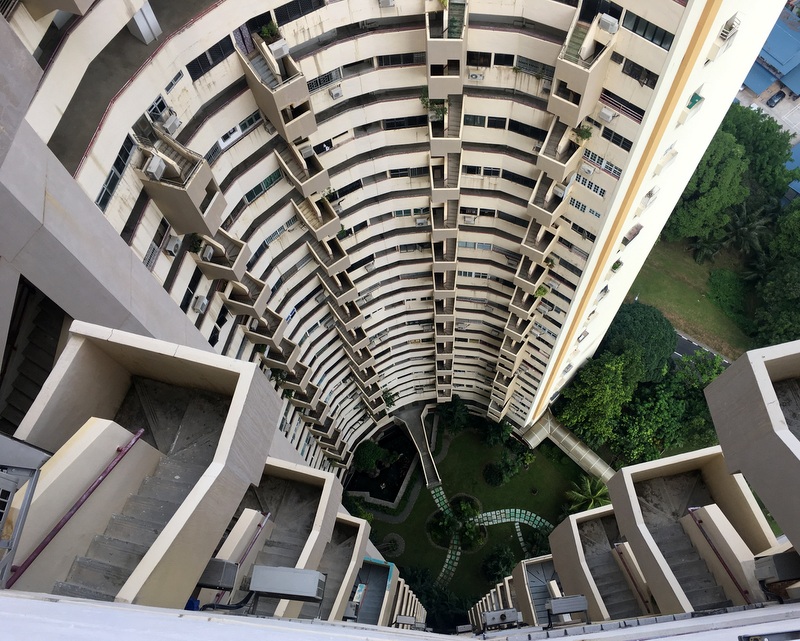
From his penthouse you have an unobstructed view of Singapore. It was slightly hazy during my visit, but Dr Lee told me that you can even see the sea and Indonesia when the sky is clear.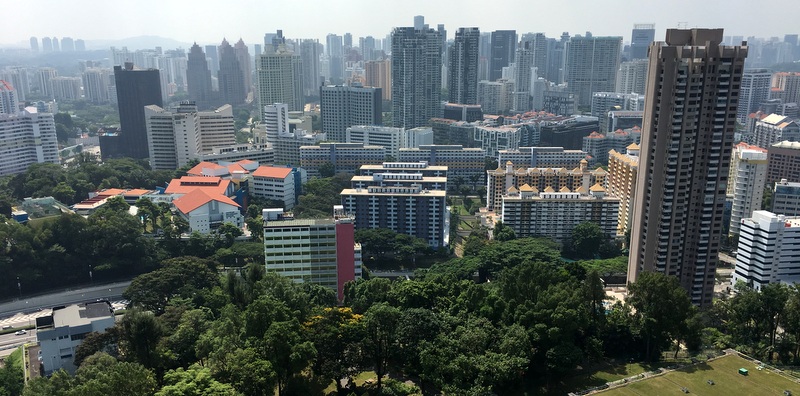
The apartments are built in split-level style and as a penthouse occupies two floors, there are many levels. Fascinating, how I would love to live in an apartment like this!
- Livingroom
- Garden terrace
- Master Bedroom
- My Guestroom
But as the building probably will demolished in the near future, my friend is already preparing to leave. Very sad. There have been proposals for conservation, read more details here, but at the end of the day it came to nothing.
Two more pictures, a night view looking up, and a proposal for conservation/renovation, prepared in 2014 by Tan Cheng Siong’s firm, Archurban Architects Planners. Pity that this beautiful design will not be realised.
After I had arrived in Singapore (by First Coach bus) and met Dr Lee in his apartment, we went out in the afternoon to visit an exhibition of textile art, Nüshu: An Inspiration , just opened the day before I arrived. The artist, Benny Ong, was present to explain to us the meaning of the artworks. Even without any explanation his work is quite fascinating. Ong became famous as a fashion designer, but switched in the 2000’s to textile art
- “Loyalty” (second from left)
- “Destiny” (in the middle)
- “The seat of Lu”
- With the artist, second from right
The exhibition was held in the Goo Loo Club, more than 100 year old, and a couple of years ago revitalised. It used to be the club for the Peranakan millionaires of Singapore The building next to it (right picture) is even grander and was the club for the Chinese millionaires…:-). It dates back to 1891 and was more modestly named the Chinese Weekly Entertainment Club
We had dinner with friends in another prestigious club, the Singapore Cricket Club , the second oldest club of Singapore, established in 1852, the present clubhouse is from 1884. Very good cuisine, I had a delicious lamb shank
After dinner we had a walk through town. Every time I visit Singapore, I enjoy it more. Traditionally in Malaysia the opinion about Singapore is rather negative, concrete jungle, over organised etc. But when you see everybody enjoying the evening temperatures on the Esplanade, with everywhere activities, it is a pleasant, peaceful town.
- Marina Bay Sands Hotel
- Singapore River
- Show time!
- Victoria Concert Hall
The next morning, after breakfast we visited the Flower Dome in the Gardens by the Bay. Special exhibition during our visit was an orchid display, nice, but I prefer the Orchid Garden in the Singapore Botanical Gardens
There are many different gardens in the Flower Dome, each dedicated to a specific continent or plant species. I liked the cactuses..:-)
Nice flowers, old olive trees, a baobab tree, you wonder how they transported those trees from their original locations.
Decorated by Peranakan facades and other decorative items, it was a pleasure to walk around, although the other dome, the Cloud Forest, visited during my January visit, is more spectacular.
Walking back to town from the Gardens by the Bay, you pass Marina Bay Sands hotel, the iconic landmark of Singapore. Not cheap but worth to stay there at least once, see my 2013 report Singapore. The ArtScience museum nearby is by the same architect
My next destination was an exhibition in the ArtScience Museum by a Dutch(!) artist, Theo Jansen, who has been designing and building “beach animals”, constructions of PVC tube that are able to move along the beach when there is enough wind.
It was a fascinating exhibition, I have written a separate post about it: Strandbeesten, (the Dutch translation of beach animals). Here one of his creations
My trips are not complete without food..:-) For lunch we went back to the Singapore Cricket Club, where I had a tasty laksa. That evening we had dinner at a friend’s place, he had prepared a delicious meal with many different dishes. And the next morning we went to the Tiong Bahru Food market, where I had nasi lemak. I think it is a misconception that the Singaporean food culture is inferior to the Malaysian one.
- Entrance of the SCC
- Tasty laksa
- Dinner at a friend’s place
- Nasi Lemak for breakfast
This day I spent on my own. After breakfast Lee dropped me at the Peranakan museum, near the Fort Canning Hill. I had never visited this part of Singapore, it was a pleasant walk. The hill has a rich history, read the Wikipedia link.
In the 19th century there was a Christian cemetery on the hill, the Gothic gate (1846) is a remnant and probably the two attractive cupolas as well. Several tomb stones have been placed in the surrounding wall.
I was interested to visit the Battle Box, the Military Command Center during the Japanese invasion in 1941/42. It is now a museum with a guided tour. After I bought my ticket there was just enough time for a cup of coffee in the National Museum of Singapore, located nearby.
- National Museum, old and new
- Time for coffee
- Guided tour
- Battle Box entrance
The guided tour was very informative. You are not allowed to take pictures inside the maze of corridors and rooms, pity but understandable. I found a picture on the Internet with the most impressive room, where on 15 February 1942 Lieutenant-General Percival decided to surrender, in spite of Churchill’s order to keep fighting until the last man.
I am very interested in the Japanese invasion of Malaysia, see my report Japan invades Malaya 1941/42 which describes the first part of the invasion, until KL.
Some pictures outside the Battle Box. A sally port is a hidden door to enter and exit the Battle Box undetected. In case of emergency or fire you could escape via a ladder. What is now the Fort Canning Arts Center, were originally British Army Barracks, constructed in 1926. And Hotel Fort Canning was the British Far East Command Headquarters during World War II. Everything looks so peaceful and serene now..:-)
- A sally port
- Escape door
- Fort Canning Arts Center
- Hotel Fort Canning
After the Battle Box I walked down the hill to the Peranakan Museum, a beautiful building in Classical style, originally built in 1910-12 for the Tao Nan Chinese School.
You can explore the museum on your own, but I decided to follow a (free) guided tour, which was again very informative. The Peranakan are the descendants of Chinese immigrants who came to the Malay archipelago between the 15th and 17th centuries. Another term for them is Nyonya (for the women) and Baba (for the men). I didn’t know that Yap Ah Loy, Capitan Cina of KL and Lee Kuan Yew, first president of Singapore, were Peranakan…:-)
- Nyonya fashion
- Many were Christian
- But not all…
- Ancestor Worship
- Funeral clothing
- Wig of Lee Kuan Yew
- Tableware of Yap Ah Loy
- Peranakan kitchen
Dinner that night was in the Tanglin Club, one of Singapore’s most prestigious and prominent social clubs, founded in 1865. Even more upmarket than the SSC, I would say.
Western food this time. Walking around in the lobby I noticed a board with the past presidents of the club. Surprised to find J.W.W. Birch in the list, the first British resident of Perak, murdered in 1875 in Pasir Salak. In 1876 the club had no president, just a coincidence?
- Dr Lee and his 93 year old sister
- I had Mash & Bangers, can it be more British?
- J.W.W. Birch was one of the first presidents!
- Half-boiled eggs, can it be more Asian?
After breakfast the next morning, I took the bus back to KL. Already looking forward to my next visit of Singapore…:-)

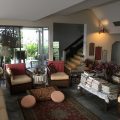
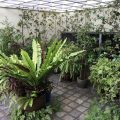
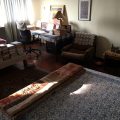
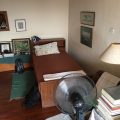
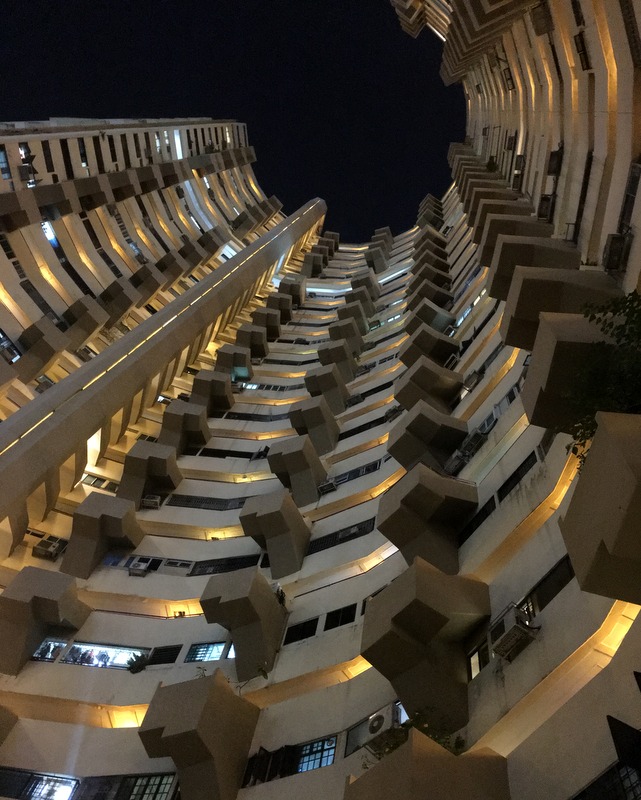
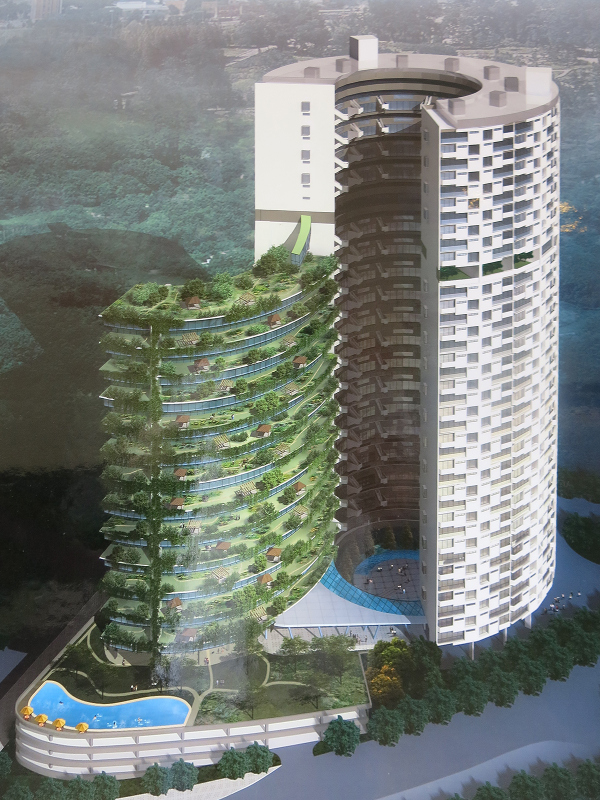

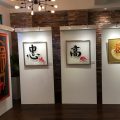
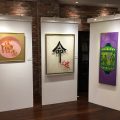
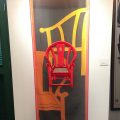
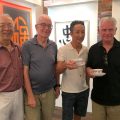
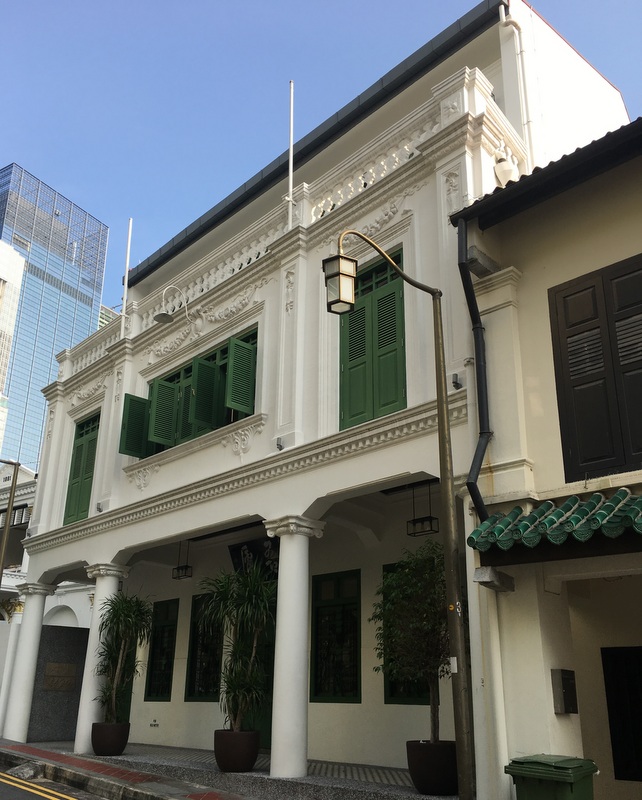
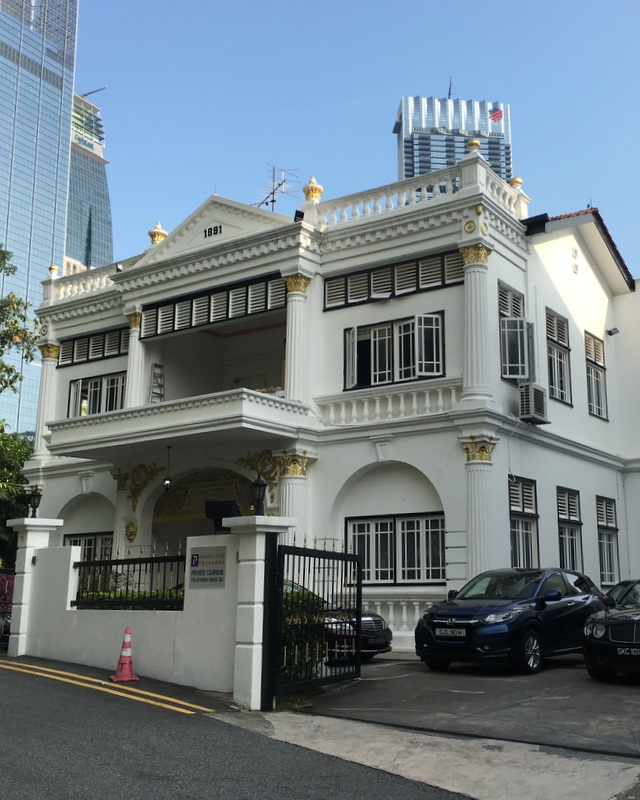
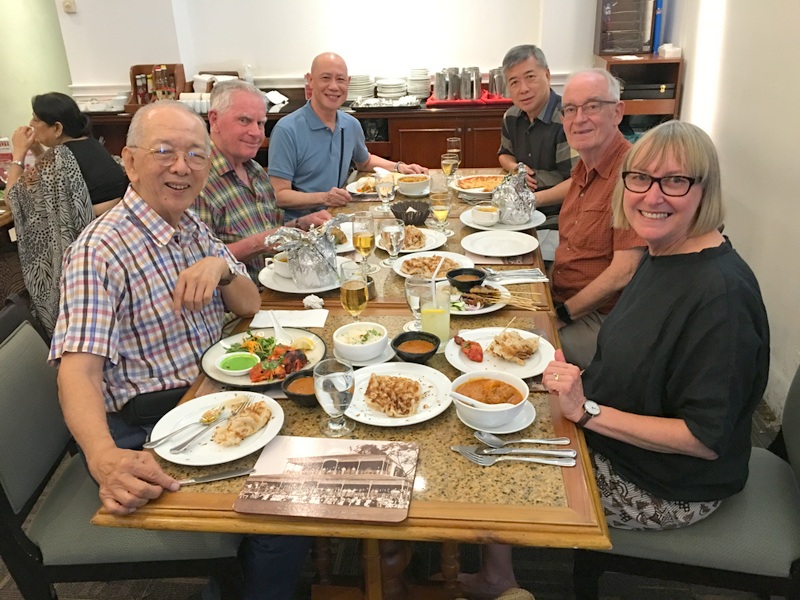
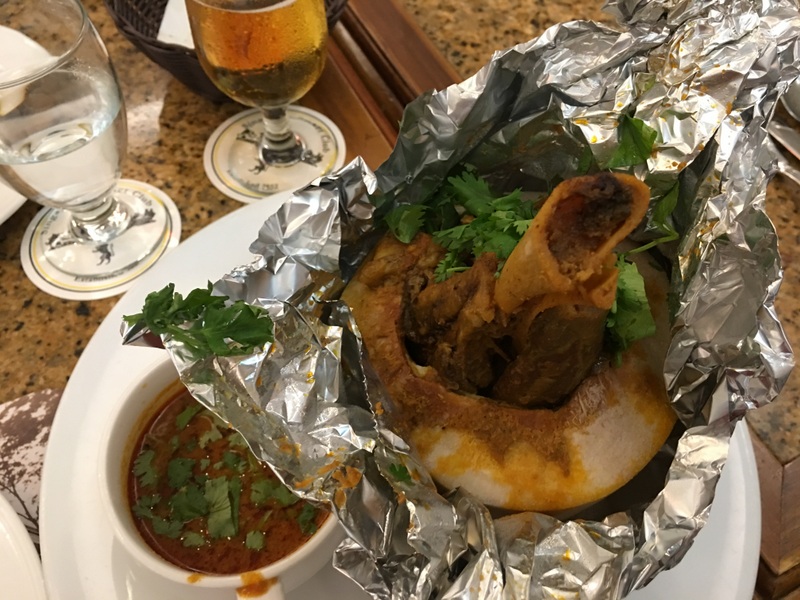
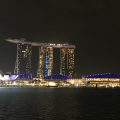
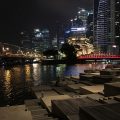
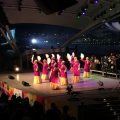
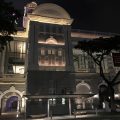
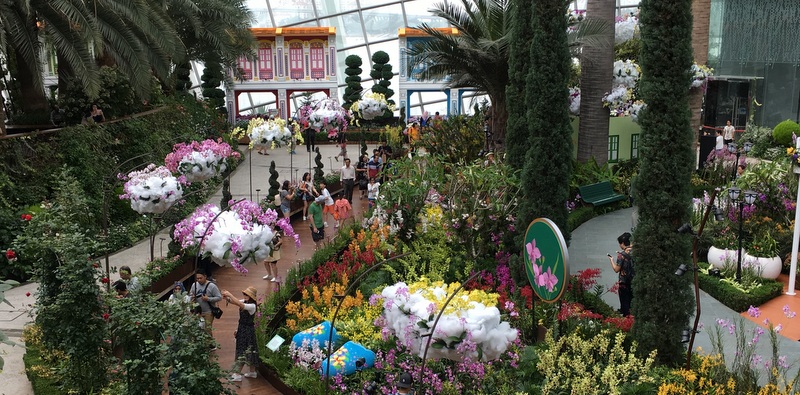
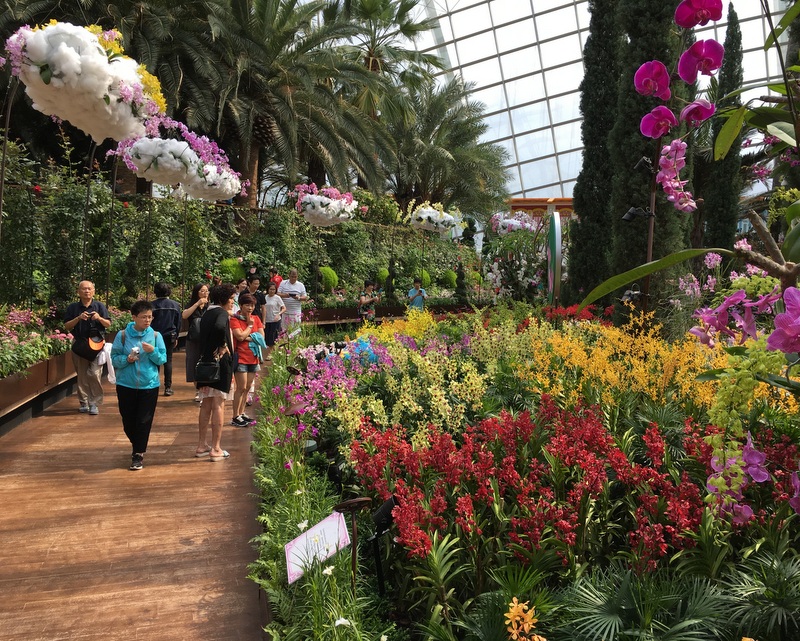
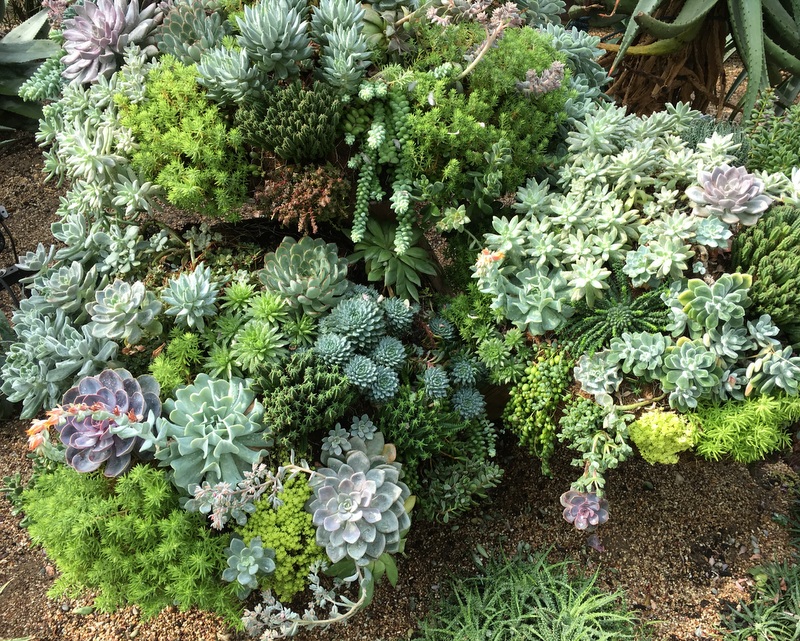
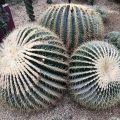
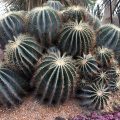
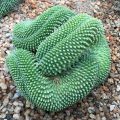
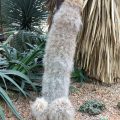
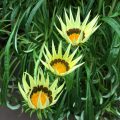
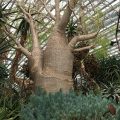
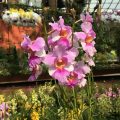
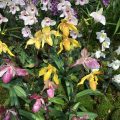
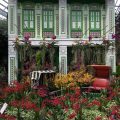

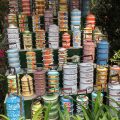
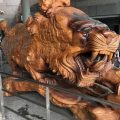
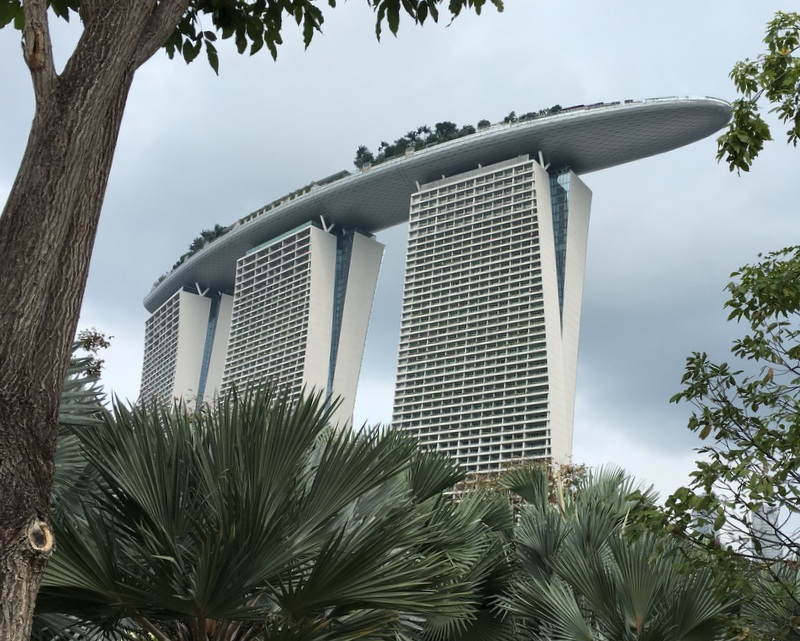
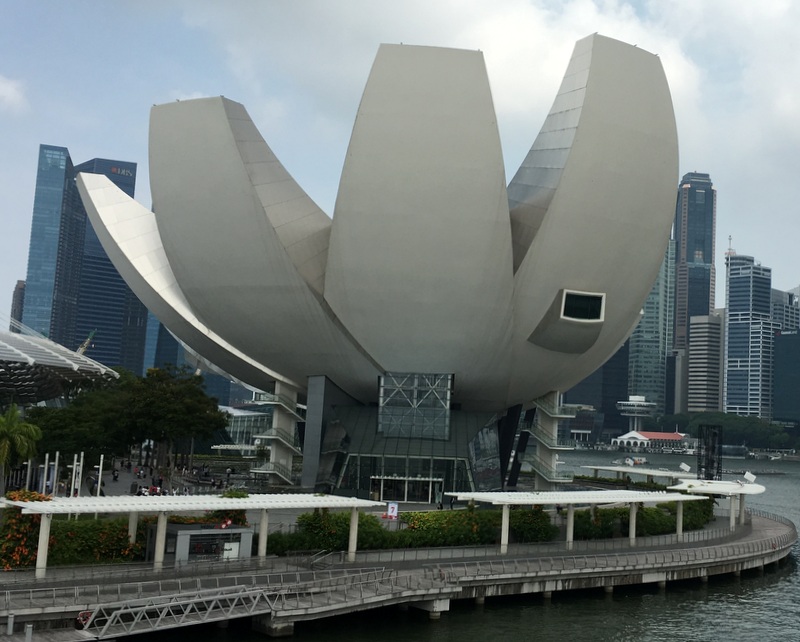

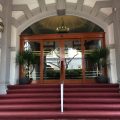
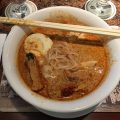
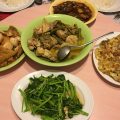
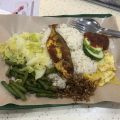
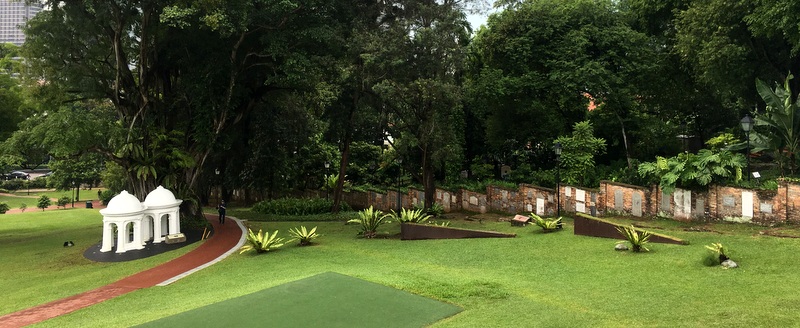
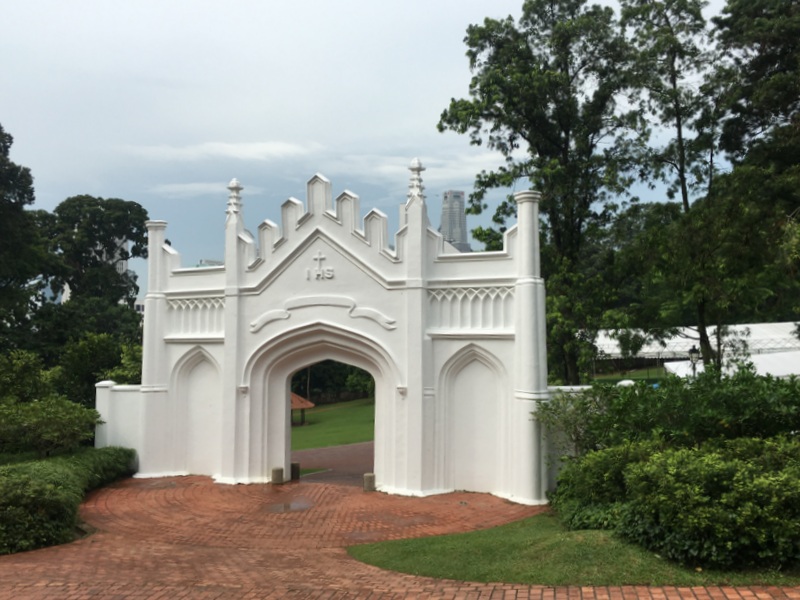
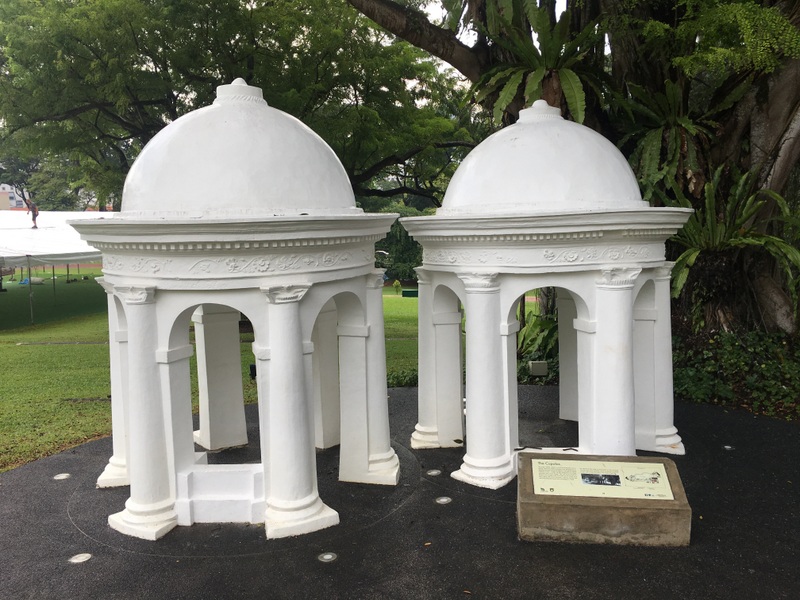
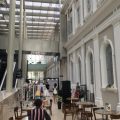
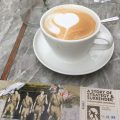
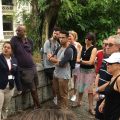

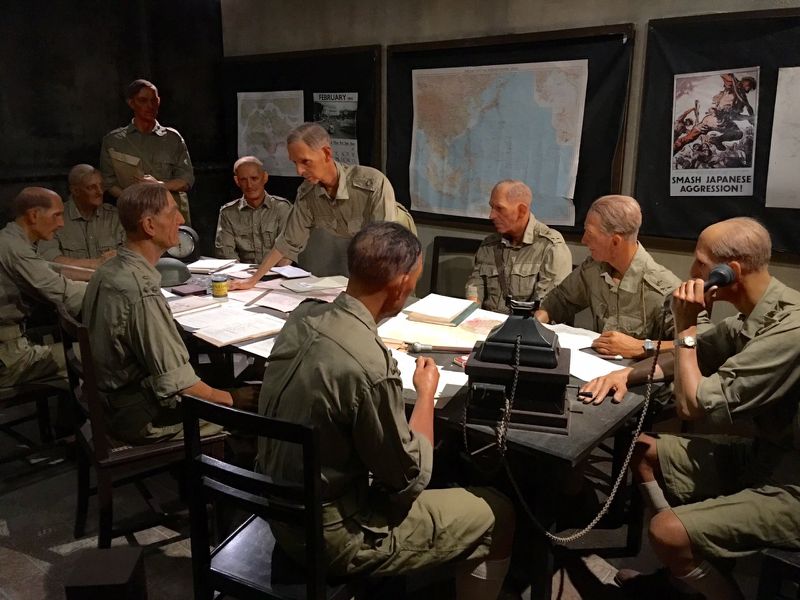
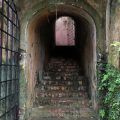
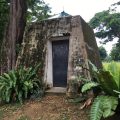
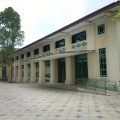
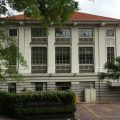
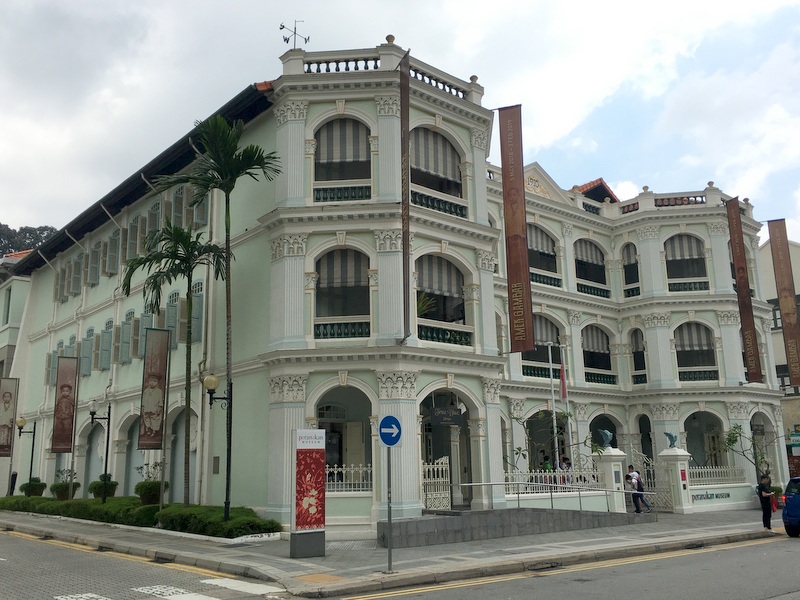
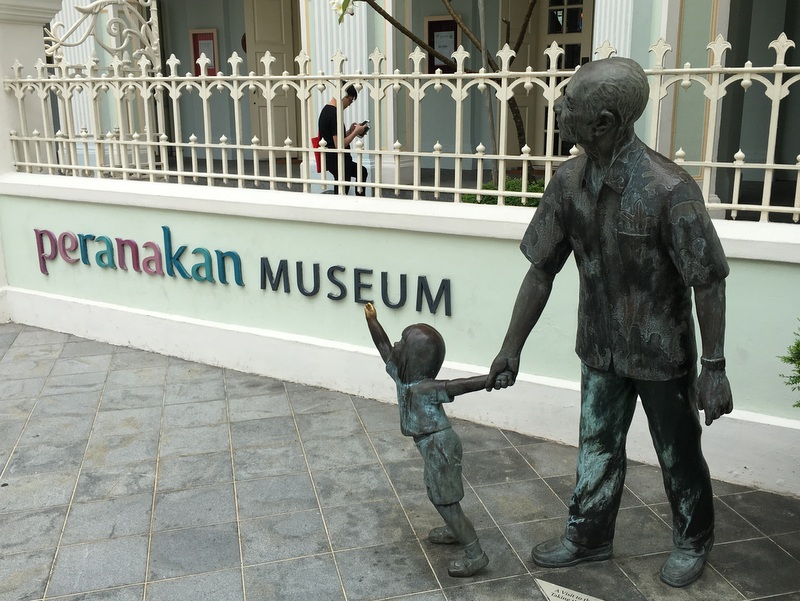
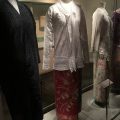
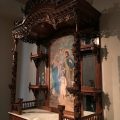
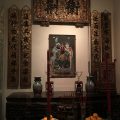
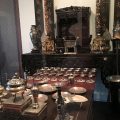
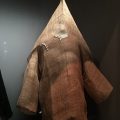
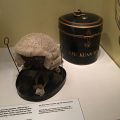
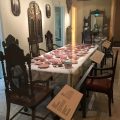
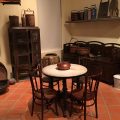
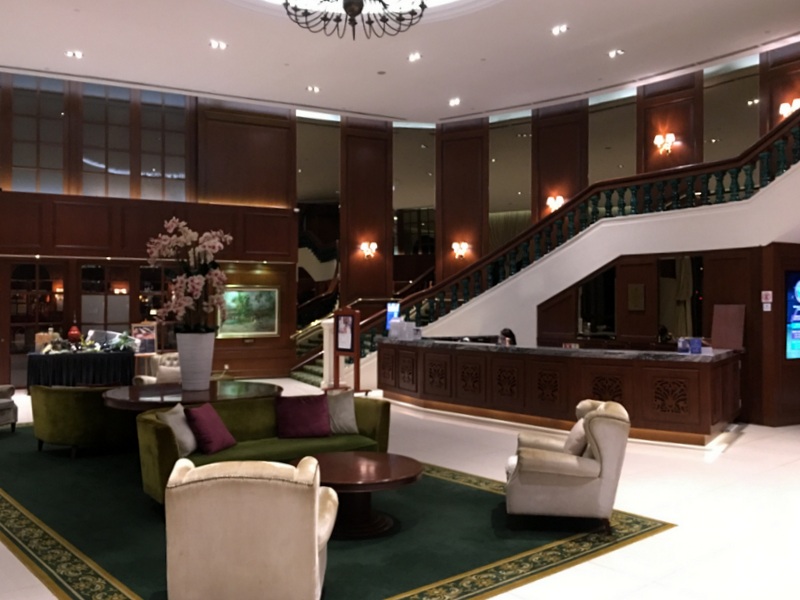
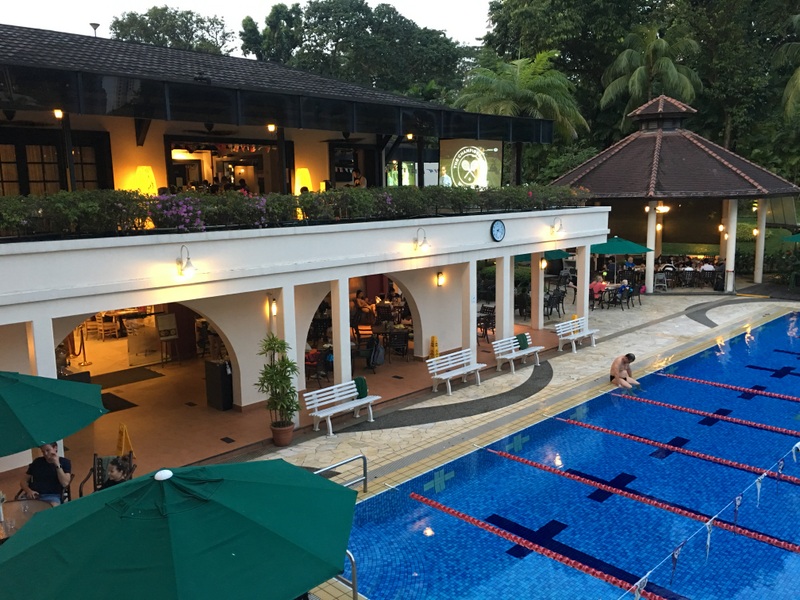
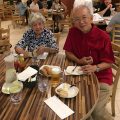
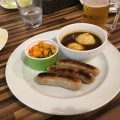
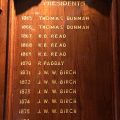
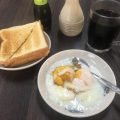
Thanks Jan. You sure know how to make a humdrum place seem interesting….and possibly worth a visit…again